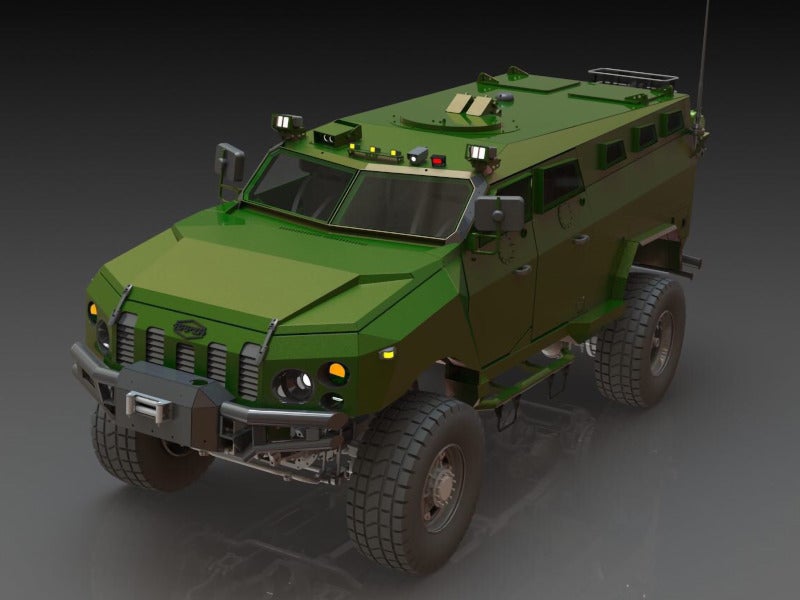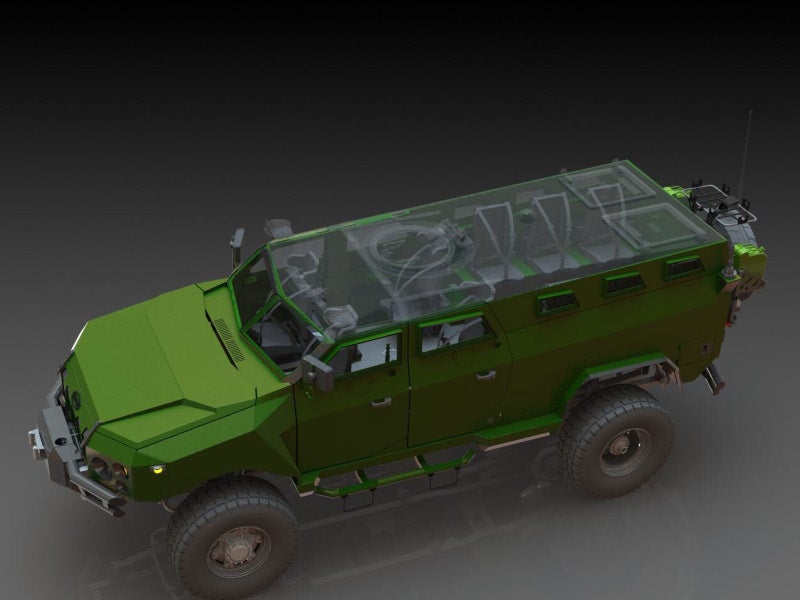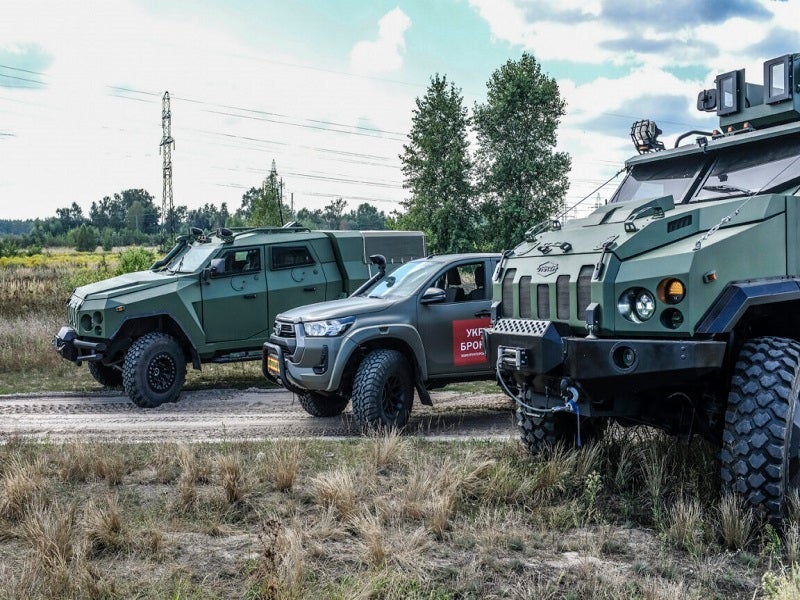Understand the impact of the Ukraine conflict from a cross-sector perspective with the Global Data Executive Briefing: Ukraine Conflict
Kamrat is a next-generation 4×4 armoured personnel carrier (APC) developed by Ukrainian Armor in collaboration with PrJSC ‘KrAZ’.
The vehicle is the first Ukrainian APC to feature the maximum protection class PZSA-6, which is equivalent to STANAG 4569 level 3.
The Kamrat-M, a variant of the Kamrat APC, is based on the Novator wheeled armoured combat vehicle. It is equipped with the Stugna-P anti-tank missile launcher.
The Kamrat-M vehicles equipped with the LRAD-1000Xi long-range acoustic devices participated in the joint special tactical training exercises of the Ministry of Internal Affairs (MIA), Ukraine, in November 2021.
Ukrainian Armor was selected as the finalist for the Sikorsky Challenge, based on its project of engineering the Kamrat-M based modular hardware to transform armoured vehicles.
The Sikorsky Challenge is an open ecosystem that encourages the development of innovative technologies to boost the Ukrainian economy.
Kamrat-L, which is a Varta mine-resistant ambush-protected (MRAP) vehicle-based multi-function tactical level control unit, along with Kamrat-M was displayed at the Army’s Digital Future exhibition in October 2021. The Digital Future was held on the occasion of Defenders of Ukraine Day, which is celebrated to honour the veterans of the nation’s armed forces.
Kamrat-L and Kamrat-M modifications were demonstrated at a military parade conducted during the celebrations of the 30th Independence Day of Ukraine in August 2021.
Kamrat armoured vehicle design and features
The Kamrat armoured vehicle is based on the chassis of the KrAZ-5233 4×4 domestic off-road vehicle. It can accommodate two crew members and eight passengers.
The APC has an overall length of 7.19m, a width of 2.55m, and a height of 2.6m. It also has a gross weight of 16,400kg.
The door mechanism provided by TriMark allows power locking of heavy-duty doors weighing up to 300kg. All doors comply with the FMVSS 206 strength requirements.
The vehicle is equipped with electric shock protection and a waterproof winch with a towing capacity of 10t. Other systems such as front and rear cameras and GPS navigation are also fitted to the vehicle.
Made of polycarbonate materials, all lights fitted to the vehicle are resistant to dust, water and chalk. The interiors of the vehicle have full, partial camouflage and specific night lighting settings.
The APC is also fitted with air conditioning, heater, flow ventilation, first aid kit, and powder gases ventilation systems.
Armament aboard Kamrat APC
Kamrat is armed with a 12.7mm Sarmat combat module, a 107mm Corsar anti-tank guided missile (ATGM), or Skif man-portable anti-tank missile systems.
The combat module integrates a rotating platform with rails for firing missiles, a power unit, and a guidance system.
The Corsar ATGM can engage land-based targets, including tanks, armoured vehicles, and combat reconnaissance vehicles, as well as aerial targets such as helicopters and unmanned aircraft.
Self-protection of Kamrat
The PZSA-6 classification enables the vehicle to protect its crew against 7.62mm rounds fired from distances of 10m. The armoured glass offers similar protection such as the main armour.
The APC features wall-mounted blast protection and shock-absorbing seats equipped with an advanced energy damper attenuation system.
The vehicle provides improved safety as it is fitted with a new mine protection bar which protects the crew from explosions under its hull. It can survive the blast of 6kg TNT under the wheel or bottom.
Kamrat has filter ventilation systems for protecting the occupants from natural pollutants and weapons of mass destruction (WMD). It is fitted with a fire extinguishing system with ultraviolet and infrared detectors.
Kamrat engine and mobility
The armoured vehicle is equipped with a six-cylinder turbocharged engine, which offers a maximum power of 320hp and a torque of 1,050Nm. The vehicle’s engine is fitted with extra armour plates for protection against 7.62mm rounds.
Kamrat has the capacity to hold up to 350l of fuel. The power plant allows the vehicle to run at a speed of 100km/h.
The vehicle is installed with a centralised tire inflation system that allows the driver to manage tire pressure without leaving the cabin. The system allows the vehicle to traverse on rough terrains by automatically maintaining the tire pressure. It also shuts off the wheel from the system, in the event of considerable damage.
The Kamrat APC is also fitted with a run-flat system, which allows the vehicle to operate for up to 50km at a speed of 30km/h, in the event of a puncture or loss of air pressure.
The APC can be transported by the C-130 Hercules aircraft manufactured by Lockheed Martin.






